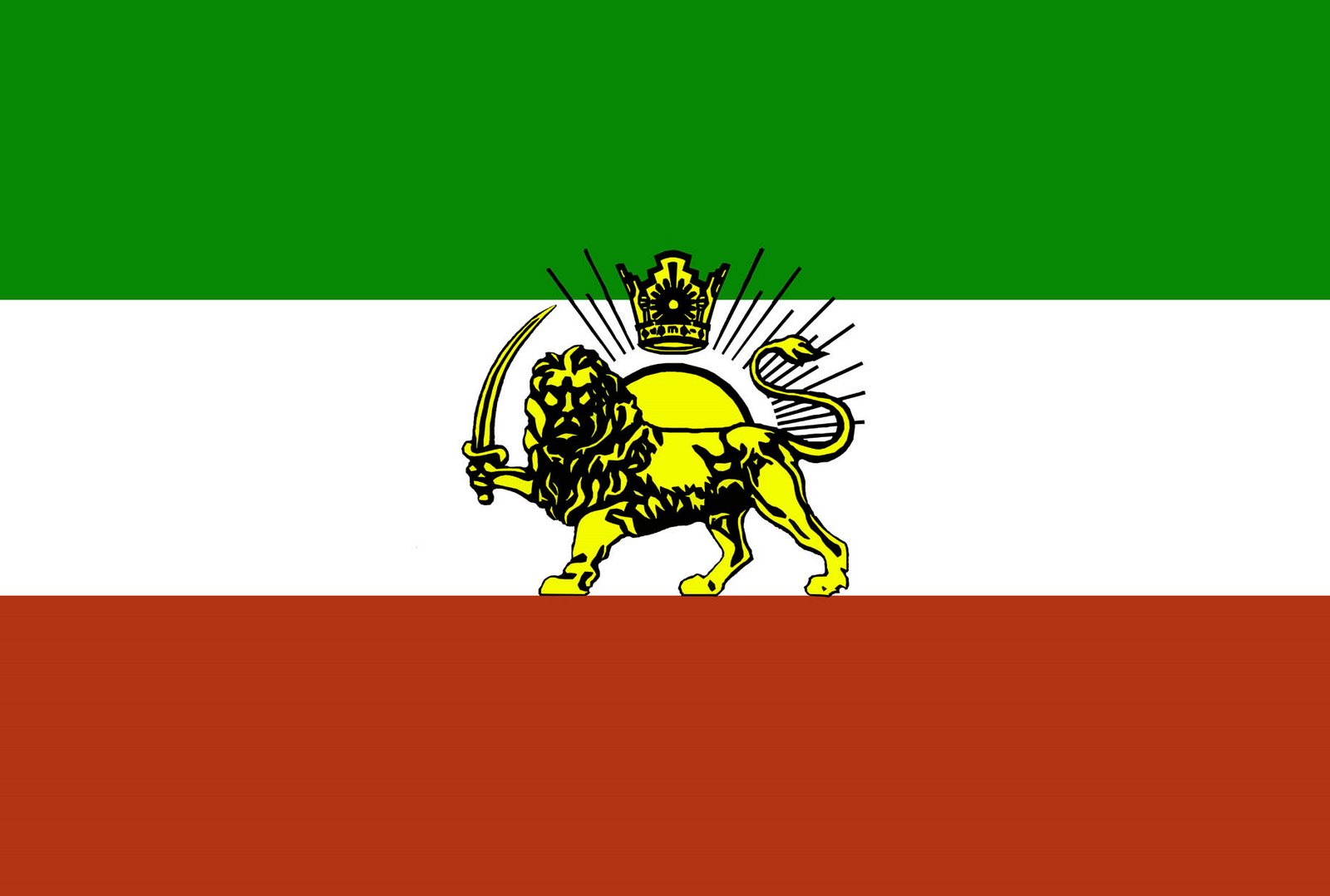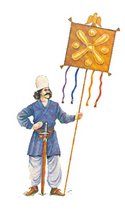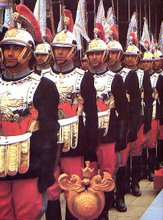

Good read on Allah, the Arab moon god that muslims worship.
*************************
Allah, the Moon God
The Archeology of The Middle East
The religion of Islam has as its focus of worship a deity by the name of "Allah." The Muslims claim that Allah in pre-Islamic times was the biblical God of the Patriarchs, prophets, and apostles. The issue is thus one of continuity. Was "Allah" the biblical God or a pagan god in Arabia during pre-Islamic times? The Muslim's claim of continuity is essential to their attempt to convert Jews and Christians for if "Allah" is part of the flow of divine revelation in Scripture, then it is the next step in biblical religion. Thus we should all become Muslims. But, on the other hand, if Allah was a pre-Islamic pagan deity, then its core claim is refuted. Religious claims often fall before the results of hard sciences such as archeology. We can endlessly speculate about the past or go and dig it up and see what the evidence reveals. This is the only way to find out the truth concerning the origins of Allah. As we shall see, the hard evidence demonstrates that the god Allah was a pagan deity. In fact, he was the Moon-god who was married to the sun goddess and the stars were his daughters.
Archaeologists have uncovered temples to the Moon-god throughout the Middle East. From the mountains of Turkey to the banks of the Nile, the most wide-spread religion of the ancient world was the worship of the Moon-god. In the first literate civilization, the Sumerians have left us thousands of clay tablets in which they described their religious beliefs. As demonstrated by Sjoberg and Hall, the ancient Sumerians worshipped a Moon-god who was called many different names. The most popular names were Nanna, Suen and Asimbabbar. His symbol was the crescent moon. Given the amount of artifacts concerning the worship of this Moon-god, it is clear that this was the dominant religion in Sumeria. The cult of the Moon-god was the most popular religion throughout ancient Mesopotamia. The Assyrians, Babylonians, and the Akkadians took the word Suen and transformed it into the word Sin as their favorite name for the Moon-god. As Prof. Potts pointed out, "Sin is a name essentially Sumerian in origin which had been borrowed by the Semites."
In ancient Syria and Canna, the Moon-god Sin was usually represented by the moon in its crescent phase. At times the full moon was placed inside the crescent moon to emphasize all the phases of the moon. The sun-goddess was the wife of Sin and the stars were their daughters. For example, Istar was a daughter of Sin. Sacrifices to the Moon-god are described in the Pas Shamra texts. In the Ugaritic texts, the Moon-god was sometimes called Kusuh. In Persia, as well as in Egypt, the Moon-god is depicted on wall murals and on the heads of statues. He was the Judge of men and gods. The Old Testament constantly rebuked the worship of the Moon-god (see: Deut. 4:19;17:3; II Kngs. 21:3,5; 23:5; Jer. 8:2; 19:13; Zeph. 1:5, etc.) When Israel fell into idolatry, it was usually the cult of the Moon-god. As a matter of fact, everywhere in the ancient world, the symbol of the crescent moon can be found on seal impressions, steles, pottery, amulets, clay tablets, cylinders, weights, earrings, necklaces, wall murals, etc. In Tell-el-Obeid, a copper calf was found with a crescent moon on its forehead. An idol with the body of a bull and the head of man has a crescent moon inlaid on its forehead with shells. In Ur, the Stela of Ur-Nammu has the crescent symbol placed at the top of the register of gods because the Moon-god was the head of the gods. Even bread was baked in the form of a crescent as an act of devotion to the Moon-god. The Ur of the Chaldees was so devoted to the Moon-god that it was sometimes called Nannar in tablets from that time period.
A temple of the Moon-god has been excavated in Ur by Sir Leonard Woolley. He dug up many examples of moon worship in Ur and these are displayed in the British Museum to this day. Harran was likewise noted for its devotion to the Moon-god. In the 1950's a major temple to the Moon-god was excavated at Hazer in Palestine. Two idols of the moon god were found. Each was a stature of a man sitting upon a throne with a crescent moon carved on his chest . The accompanying inscriptions make it clear that these were idols of the Moon-god. Several smaller statues were also found which were identified by their inscriptions as the "daughters" of the Moon-god. What about Arabia? As pointed out by Prof. Coon, "Muslims are notoriously loath to preserve traditions of earlier paganism and like to garble what pre-Islamic history they permit to survive in anachronistic terms."
During the nineteenth century, Amaud, Halevy and Glaser went to Southern Arabia and dug up thousands of Sabean, Minaean, and Qatabanian inscriptions which were subsequently translated. In the 1940's, the archeologists G. Caton Thompson and Carleton S. Coon made some amazing discoveries in Arabia. During the 1950's, Wendell Phillips, W.F. Albright, Richard Bower and others excavated sites at Qataban, Timna, and Marib (the ancient capital of Sheba). Thousands of inscriptions from walls and rocks in Northern Arabia have also been collected. Reliefs and votive bowls used in worship of the "daughters of Allah" have also been discovered. The three daughters, al-Lat, al-Uzza and Manat are sometimes depicted together with Allah the Moon-god represented by a crescent moon above them. The archeological evidence demonstrates that the dominant religion of Arabia was the cult of the Moon-god.
In Old Testament times, Nabonidus (555-539 BC), the last king of Babylon, built Tayma, Arabia as a center of Moon-god worship. Segall stated, "South Arabia's stellar religion has always been dominated by the Moon-god in various variations." Many scholars have also noticed that the Moon-god's name "Sin" is a part of such Arabic words as "Sinai," the "wilderness of Sin," etc. When the popularity of the Moon-god waned elsewhere, the Arabs remained true to their conviction that the Moon-god was the greatest of all gods. While they worshipped 360 gods at the Kabah in Mecca, the Moon-god was the chief deity. Mecca was in fact built as a shrine for the Moon-god.
This is what made it the most sacred site of Arabian paganism. In 1944, G. Caton Thompson revealed in her book, The Tombs and Moon Temple of Hureidha, that she had uncovered a temple of the Moon-god in southern Arabia. The symbols of the crescent moon and no less than twenty-one inscriptions with the name Sin were found in this temple. An idol which may be the Moon-god himself was also discovered. This was later confirmed by other well-known archeologists.
The evidence reveals that the temple of the Moon-god was active even in the Christian era. Evidence gathered from both North and South Arabia demonstrate that Moon-god worship was clearly active even in Muhammad's day and was still the dominant cult. According to numerous inscriptions, while the name of the Moon-god was Sin, his title was al-ilah, i.e. "the deity," meaning that he was the chief or high god among the gods. As Coon pointed out, "The god Il or Ilah was originally a phase of the Moon God." The Moon-god was called al-ilah, i.e. the god, which was shortened to Allah in pre-Islamic times. The pagan Arabs even used Allah in the names they gave to their children. For example, both Muhammad's father and uncle had Allah as part of their names.
The fact that they were given such names by their pagan parents proves that Allah was the title for the Moon-god even in Muhammad's day. Prof. Coon goes on to say, "Similarly, under Mohammed's tutelage, the relatively anonymous Ilah, became Al-Ilah, The God, or Allah, the Supreme Being."
This fact answers the questions, "Why is Allah never defined in the Qur'an? Why did Muhammad assume that the pagan Arabs already knew who Allah was?" Muhammad was raised in the religion of the Moon-god Allah. But he went one step further than his fellow pagan Arabs. While they believed that Allah, i.e. the Moon-god, was the greatest of all gods and the supreme deity in a pantheon of deities, Muhammad decided that Allah was not only the greatest god but the only god.
In effect he said, "Look, you already believe that the Moon-god Allah is the greatest of all gods. All I want you to do is to accept that the idea that he is the only god. I am not taking away the Allah you already worship. I am only taking away his wife and his daughters and all the other gods." This is seen from the fact that the first point of the Muslim creed is not, "Allah is great" but "Allah is the greatest," i.e., he is the greatest among the gods. Why would Muhammad say that Allah is the "greatest" except in a polytheistic context? The Arabic word is used to contrast the greater from the lesser. That this is true is seen from the fact that the pagan Arabs never accused Muhammad of preaching a different Allah than the one they already worshipped. This "Allah" was the Moon-god according to the archeological evidence. Muhammad thus attempted to have it both ways. To the pagans, he said that he still believed in the Moon-god Allah. To the Jews and the Christians, he said that Allah was their God too. But both the Jews and the Christians knew better and that is why they rejected his god Allah as a false god.
Al-Kindi, one of the early Christian apologists against Islam, pointed out that Islam and its god Allah did not come from the Bible but from the paganism of the Sabeans. They did not worship the God of the Bible but the Moon-god and his daughters al-Uzza, al-Lat and Manat. Dr. Newman concludes his study of the early Christian-Muslim debates by stating, "Islam proved itself to be...a separate and antagonistic religion which had sprung up from idolatry." Islamic scholar Caesar Farah concluded "There is no reason, therefore, to accept the idea that Allah passed to the Muslims from the Christians and Jews." The Arabs worshipped the Moon-god as a supreme deity. But this was not biblical monotheism. While the Moon-god was greater than all other gods and goddesses, this was still a polytheistic pantheon of deities. Now that we have the actual idols of the Moon-god, it is no longer possible to avoid the fact that Allah was a pagan god in pre-Islamic times. Is it any wonder then that the symbol of Islam is the crescent moon? That a crescent moon sits on top of their mosques and minarets? That a crescent moon is found on the flags of Islamic nations? That the Muslims fast during the month which begins and ends with the appearance of the crescent moon in the sky?
CONCLUSION
The pagan Arabs worshipped the Moon-god Allah by praying toward Mecca several times a day; making a pilgrimage to Mecca; running around the temple of the Moon-god called the Kabah; kissing the black stone; killing an animal in sacrifice to the Moon-god; throwing stones at the devil; fasting for the month which begins and ends with the crescent moon; giving alms to the poor, etc.
The Muslim's claim that Allah is the God of the Bible and that Islam arose from the religion of the prophets and apostles is refuted by solid, overwhelming archeological evidence. Islam is nothing more than a revival of the ancient Moon-god cult. It has taken the symbols, the rites, the ceremonies, and even the name of its god from the ancient pagan religion of the Moon-god. As such, it is sheer idolatry and must be rejected by all those who follow the Torah and Gospel.
END POST
























9 comments:
off-topic:
I think you were right about Ganji and I sense he has something in common with the regime of Iran
Did you read his last statement saying that leftist republicans shouldnt work with monarchists?
He sounded like a regime backed moron
Winston,
I do not distinguish between Mullah Khatami, Ganji, and the Supreme Shiite Leader! They are all the same "shiite" with different roles to play in the grand play they have put on show for us!
You can find just as much evidence to point out that Jesus is actually a depiction of the sun gods of ancient times. Many early christian sects blatantly practiced pagan rituals that involved sun worship. It's almost as if the old methods of dividing people (astrological deity worship)were beginging to become null and void as science and critical thought began to take hold on the masses. Therefore, the sun and moon gods had to be transformed into an intangible idea to keep the masses divided and worshipping mindlessly. All religions are cults, the names have just changed.
I'm very thankful to the author for posting such an amazing post.
oh, so how come you BLAME all muslims that they are woshiping a "MOON GOD". let me tell you something very clear. Its mentioned is our muslims holy book QURAN in chapter 112, verse 1-4 (Say he is Allah, the One and Only. Allah, the Eternal, Absolute. He begetteth not, nor is He begotten. And there is none like unto Him.) There is nothing like Allah, So don't Describe ALLAH as A MOON. MOON is Created by ALLAH. And Allah knows the BEST.
YOU FORGOT TO MENTION IT IS ALSO A CULT FOR ROBBERS RAPISTS AND BLOOD THIRSTY KILLERS.
Mr moslem you dont get it do you?Are you that brain washed?(The quran said)said what?I suggest you read article again or else go back to masjed for your daily brain wash if you have one.
Well i am going to bed now but before I go I would like to say DEATH TO THE ISLAMO FASCIST REGIME IN OUR IRAN! Goodnight to all true Iranians.
Thank you for this information. You certainly have studied this well. Will you adding any more information on your site?
As for the objections and idle threats by comments; Sirs, threats, killing or maiming an intelligent person will not convince them or others. You see, fear never has gotten a single convert in their heart.
Post a Comment